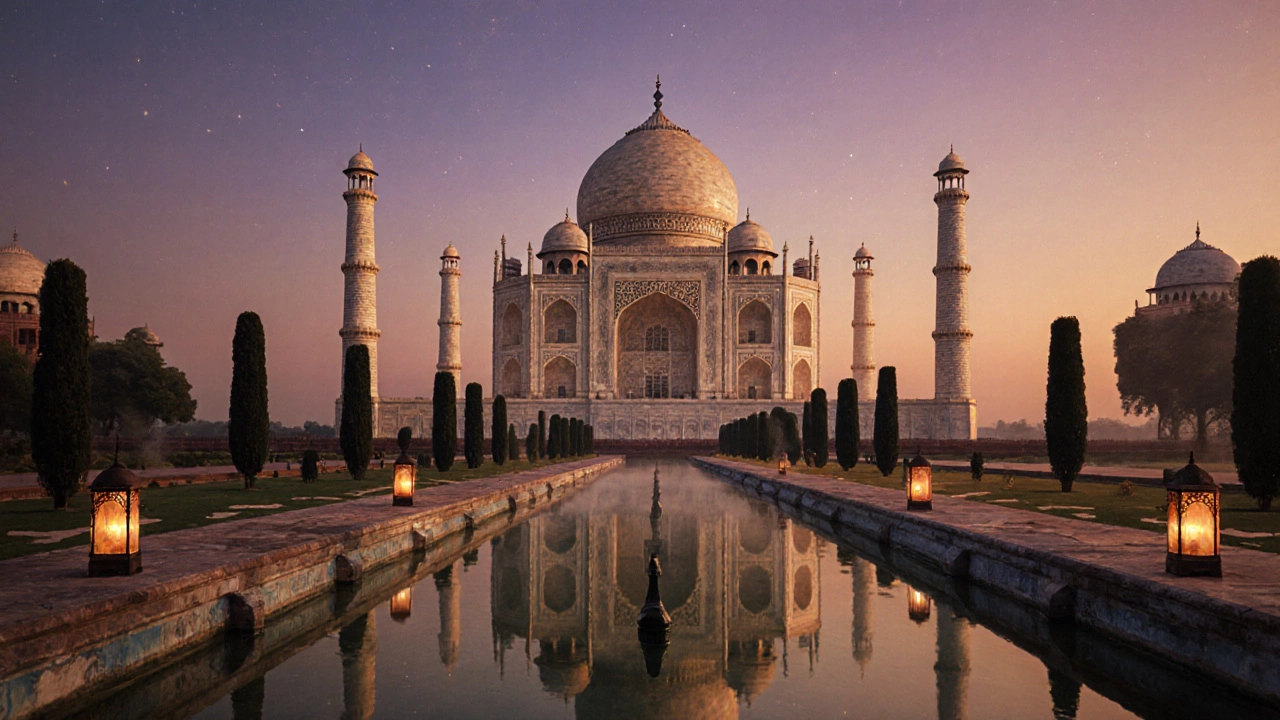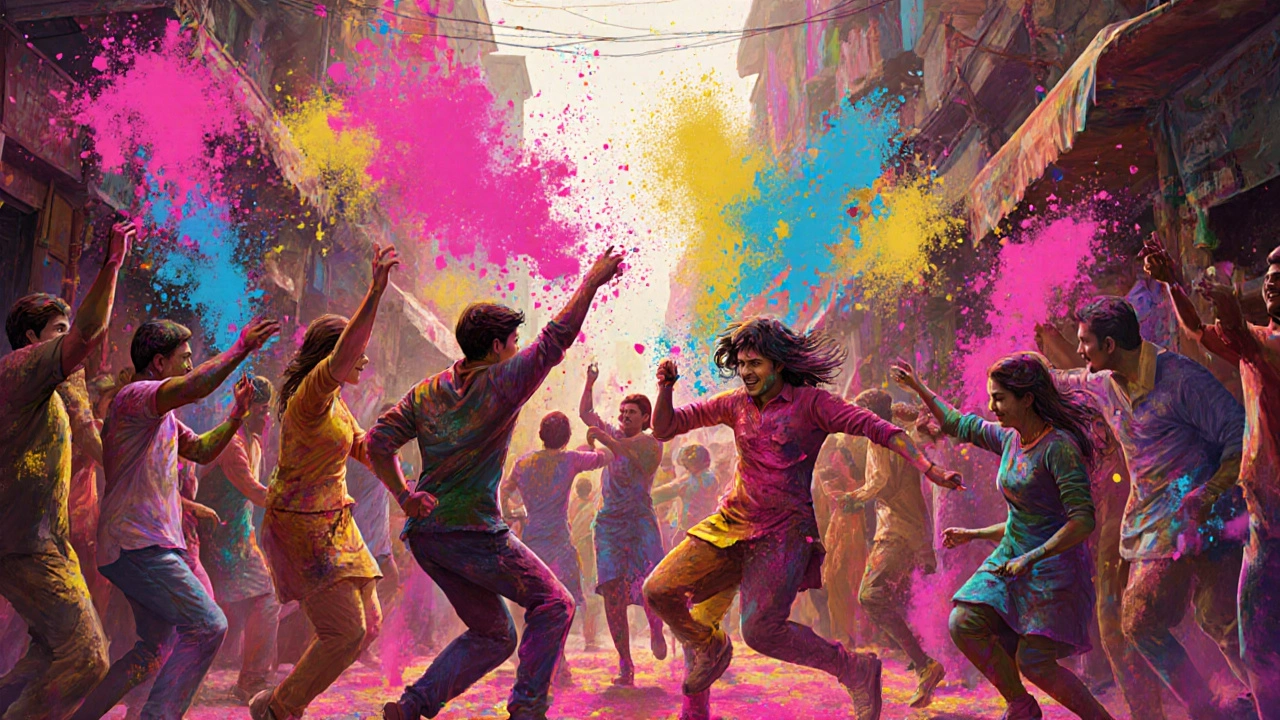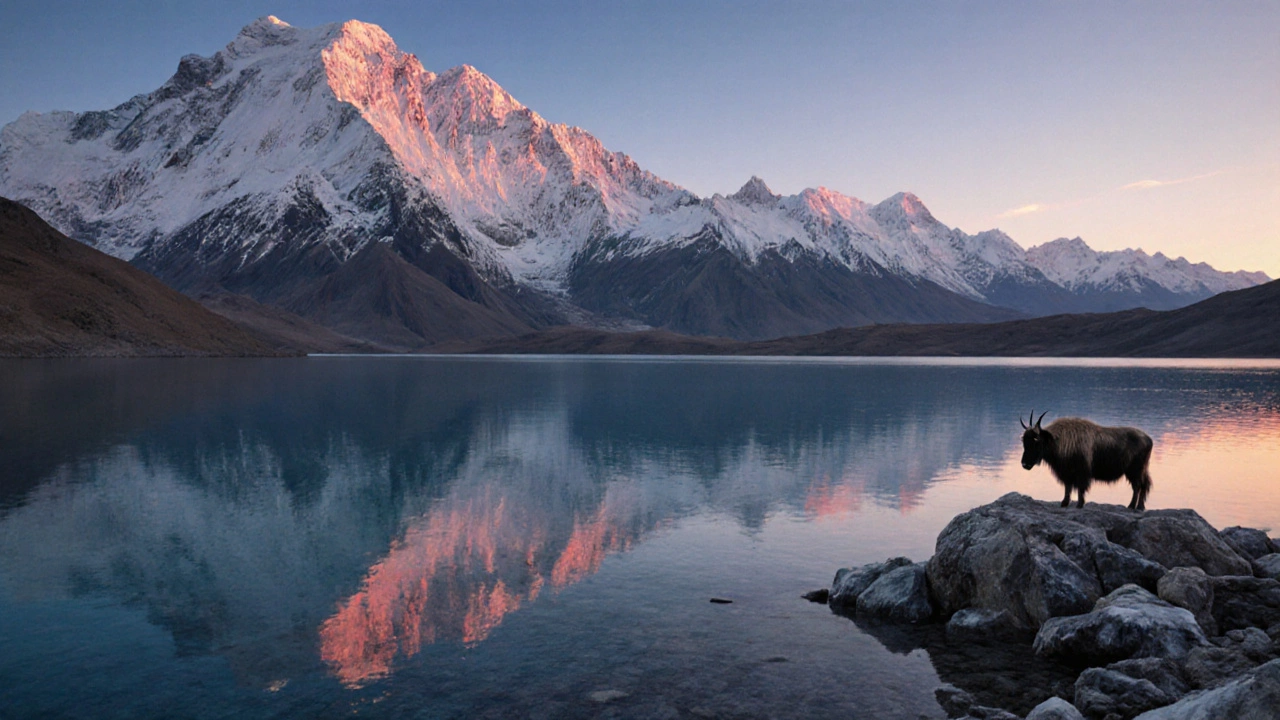India is a vast South Asian nation celebrated for its kaleidoscope of landscapes, traditions, and histories. From snow‑capped peaks to sun‑kissed deserts, from ancient temples to bustling bazaars, the country offers countless reasons to pause and admire its splendor. If you’re wondering what truly defines the beauty of India, keep reading - you’ll get a vivid picture, inspirational quotes, and a handy checklist for exploring it yourself.
Majestic Landscapes That Take Your Breath Away
India’s geography reads like a travel magazine spread. The Himalayas dominate the north, offering peaks that soar above 8,000 meters. Trekking in Ladakh or Himachal feels like stepping onto another planet, with crystal‑clear lakes such as Pangong reflecting the sky.
Down south, the Kerala Backwaters snake through palm‑fringed villages, inviting you to drift on a houseboat while the scent of fresh mud fills the air. In the west, the Western Ghats stretch along the coast, a UNESCO World Heritage site teeming with endemic flora and fauna - think pristine waterfalls and mist‑shrouded valleys.
The central deserts, especially the Thar Desert in Rajasthan, showcase golden dunes that ripple like ocean waves at sunrise, while the mangrove‑rich Sundarbans in the east hide elusive tigers and a serene, tidal rhythm.
Heritage & Architecture: Stone Stories that Speak
Every stone in India seems to whisper a tale. The iconic Taj Mahal in Agra, a marble mausoleum built by Emperor Shah Jahan in 1643, stands as an eternal love letter. Its pristine white façade reflects the changing hues of dawn, noon, and dusk - a visual poem in stone.
Beyond the Taj, the pink city of Jaipur bursts with forts, palaces, and the famed Hawa Mahal, each adorned with intricate latticework that filters both light and heat. In Madhya Pradesh, the Khajuraho Temples showcase erotic carvings that celebrate life’s sensuality, while the Sun Temple at Konark spins the story of mythic voyages.
Stepwells such as Rani Ki Vav in Gujarat or the intricately carved temples of Hampi remind us that architecture here is not just functional; it’s a spiritual canvas.
Spiritual Depth: Yoga, Rivers & Sacred Sites
India’s spiritual pulse is as strong as its physical one. The practice of Yoga originated in the Himalayas over 5,000 years ago, offering a path to physical and mental harmony that the world now embraces daily.
The holy Ganges River flows from the icy peaks of Uttarakhand, winding through cities like Varanasi where pilgrims perform rituals at sunrise, believing the river can cleanse sins. Whether you float in a ghat or simply listen to its murmurs, the Ganges carries a sense of timeless reverence.
Other sacred locations-like the Golden Temple in Amritsar or the Mahabodhi Temple in Bodh Gaya-invite travelers to sit, reflect, and feel the collective mindfulness that has endured for centuries.

Festivals & Colors: A Year‑Round Celebration
India never sleeps; it celebrates every season with a burst of color and sound. Holi, the festival of colors, turns streets into rainbow‑splashed playgrounds where strangers become friends, and laughter echoes for hours.
Diwali, the festival of lights, illuminates homes with oil lamps and fireworks, symbolizing victory of light over darkness. Navratri’s rhythmic dandiya dances in Gujarat showcase devotion through movement, while the kite‑flying frenzy of Makar Sankranti fills the skies with bright silhouettes.
Each festival is a living lesson in community, resilience, and joy, reinforcing why India feels like a warm, welcoming hug.
Cuisine & Flavors: A Gastronomic Adventure
India’s culinary map is as diverse as its geography. The north delights with buttery naan, creamy paneer, and aromatic biryanis, while the south tempts with coconut‑infused curries, tangy tamarind sambar, and crisp dosas. The east loves sweet rasgullas and fiery fish curries, whereas the west offers the spicy vindaloo of Goa and the robust dhokla of Gujarat.
Indian cuisine isn’t just food; it’s a story of trade routes, regional harvests, and centuries‑old spice blends. Sampling street‑side chaat in Delhi, sipping filter coffee in Bangalore, or sharing a family thali in Kolkata lets you taste the country’s soul.
Arts, Music & Cinema: The Pulse of Modern India
Bollywood, the world’s largest film industry, creates dazzling musical spectacles that blend drama, romance, and social commentary. A night at a cinema hall in Mumbai feels like a communal celebration of storytelling.
Classical dance forms-Bharatanatyam, Kathak, Odissi, Manipuri-turn myths into kinetic poetry, each movement narrating legends of gods and heroes. Likewise, the sitar, tabla, and sarod weave melodies that have inspired jazz legends across the globe.
These artistic expressions reflect the country’s ability to honor tradition while forging new creative pathways.

Inspirational Quotes That Capture India’s Essence
- "India is not a country, it’s an experience." - Unknown
- "The beauty of India lies not only in her monuments, but in the hearts of her people." - Mahatma Gandhi (paraphrased)
- "From the Himalayas to the seas, every sunrise over India feels like a promise." - Arjun Bhardwaj
- "In India, every scent, sound, and sight whispers a story of centuries." - R. K. Narayan
- "To travel India is to travel through a living tapestry of colors, flavors, and faiths." - Anita Desai
Checklist: How to Experience the Beauty of India Firsthand
- Visit a natural wonder: trek the Himalayas, cruise the Kerala Backwaters, or ride a camel in the Thar Desert.
- Explore a UNESCO heritage site: Taj Mahal, Khajuraho Temples, or the Sun Temple of Konark.
- Participate in a local festival: join Holi’s color splash or Light the lamps during Diwali.
- Savor regional cuisine: try street‑food in Delhi, seafood in Goa, and dosas in Chennai.
- Practice mindfulness: attend a yoga retreat in Rishikesh or meditate on the banks of the Ganges.
- Immerse in the arts: watch a Bharatanatyam performance or a Bollywood musical.
- Connect with locals: share a chai, listen to stories, and learn a few words in the native language.
| Category | Name | Location | Why It Captivates |
|---|---|---|---|
| Mountain | Himalayas | Northern India | Snow‑capped peaks, spiritual trekking routes |
| Desert | Thar Desert | Rajasthan | Golden dunes, vibrant night bazaars |
| Backwater | Kerala Backwaters | Kerala | Serene houseboat cruises among lush palms |
| Monument | Taj Mahal | Agra, Uttar Pradesh | Marble masterpiece, love story legacy |
| Temple | Khajuraho Temples | Madhya Pradesh | Exquisite carvings, spiritual artistry |
| Festival | Holi | Nationwide | Explosion of colors, joyous unity |
Frequently Asked Questions
What makes India’s natural scenery unique?
India stretches from the icy peaks of the Himalayas in the north to tropical beaches in the south, covering deserts, jungles, waterfalls, and mangroves. This geographic diversity creates micro‑climates that support a huge variety of flora, fauna, and breathtaking vistas.
Which Indian festivals should a first‑time visitor experience?
Holi (the color festival) and Diwali (the lights festival) are the most iconic, but regional celebrations like Onam in Kerala, Pongal in Tamil Nadu, and the kite‑flying Makar Sankranti also offer vivid cultural immersion.
How can I experience authentic Indian cuisine safely?
Start with well‑known street‑food stalls that have high turnover, drink bottled water, and choose dishes that are freshly cooked. Asking locals for recommendations helps you avoid overly greasy or unhygienic spots.
Is yoga in India different from what I find abroad?
Practicing yoga in its birthplace, especially near the Ganges in Rishikesh, adds a spiritual dimension. Many ashrams integrate meditation, philosophy, and vegetarian meals, offering a more holistic experience than typical fitness‑oriented classes.
What are some budget‑friendly ways to travel across India?
Use the extensive railway network, stay in guesthouses or hostels, eat at local dhabas, and travel during the shoulder seasons (October‑November or February‑March) when prices are lower but weather remains pleasant.
